According to experts, this year drought and saltwater intrusion are considered the worst in history posing a significant challenge to the largest agricultural hub of the country.
|
Each of the five provinces which have declared an emergency of saltwater intrusion will be supported with 70 billion dong by the government to serve domestic water sources. |
In Ben Tre province, as many as 5,200ha of rice is affected by saltwater intrusion, while about 20,000ha of fruit trees, 72,000ha of coconuts and more than 1,000ha of seedlings and ornamental plants are at risk. In Long An province, it is estimated that the affected rice area in the dry season is 13,500 ha. Soc Trang also has about 4,000 ha of damaged rice due to saline intrusion. Saltwater has affected all districts, towns and cities in Tien Giang province. Tens of thousands of hectares of crops in the "capital of fruit trees" have been seriously deprived of water.

A parched rice field in My Nhon commune, Ba Tri district, Ben Tre. Photo: Thong Hai
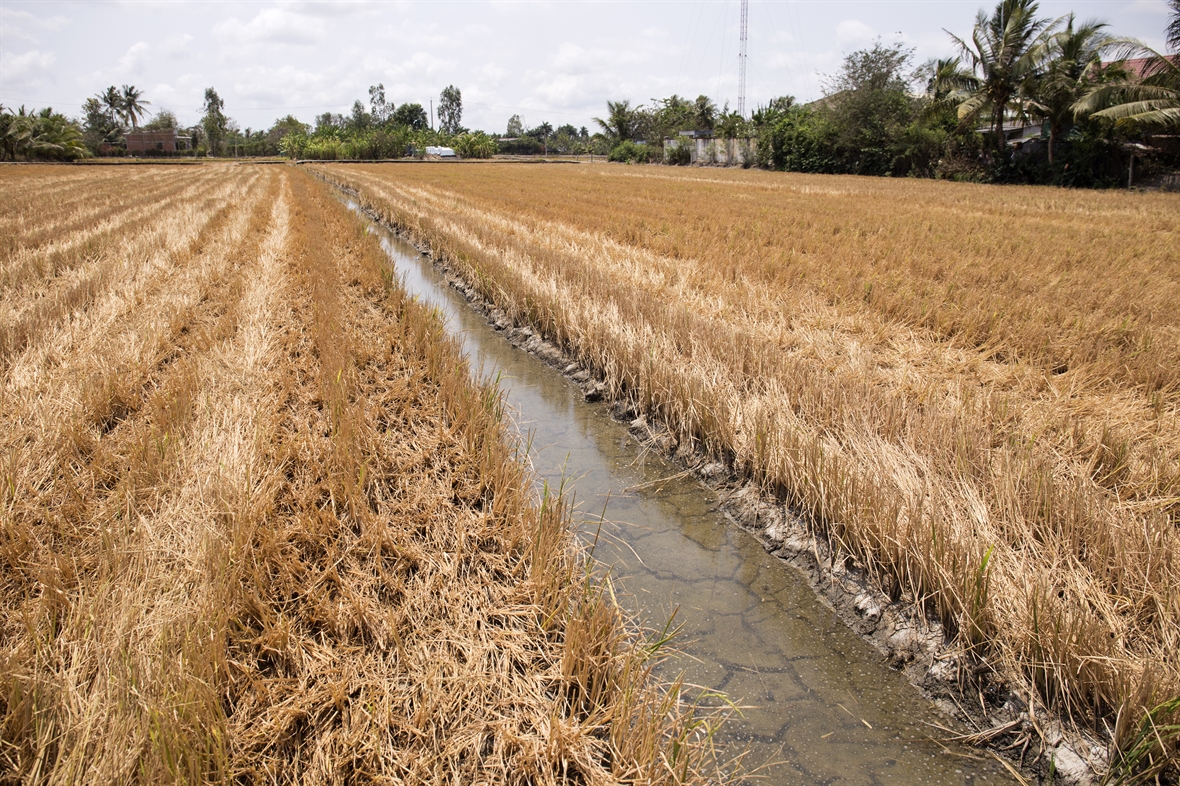
Drought and saltwater intrusion have affected about 20,000ha of rice in Ben Tre. Photo: Thong Hai
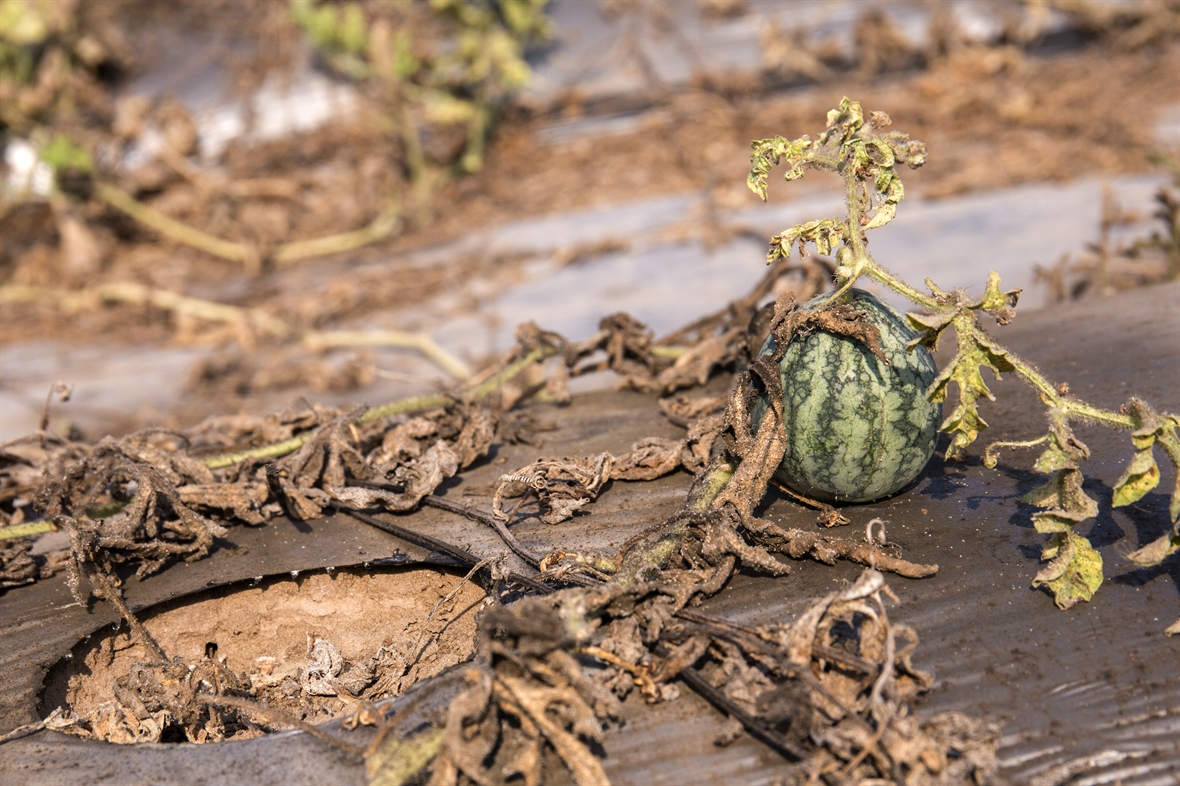
Saltwater intrusion damages watermelon crops in My Nhon and Thuy An communes, Ba Tri district, Ben Tre. Photo: Thong Hai
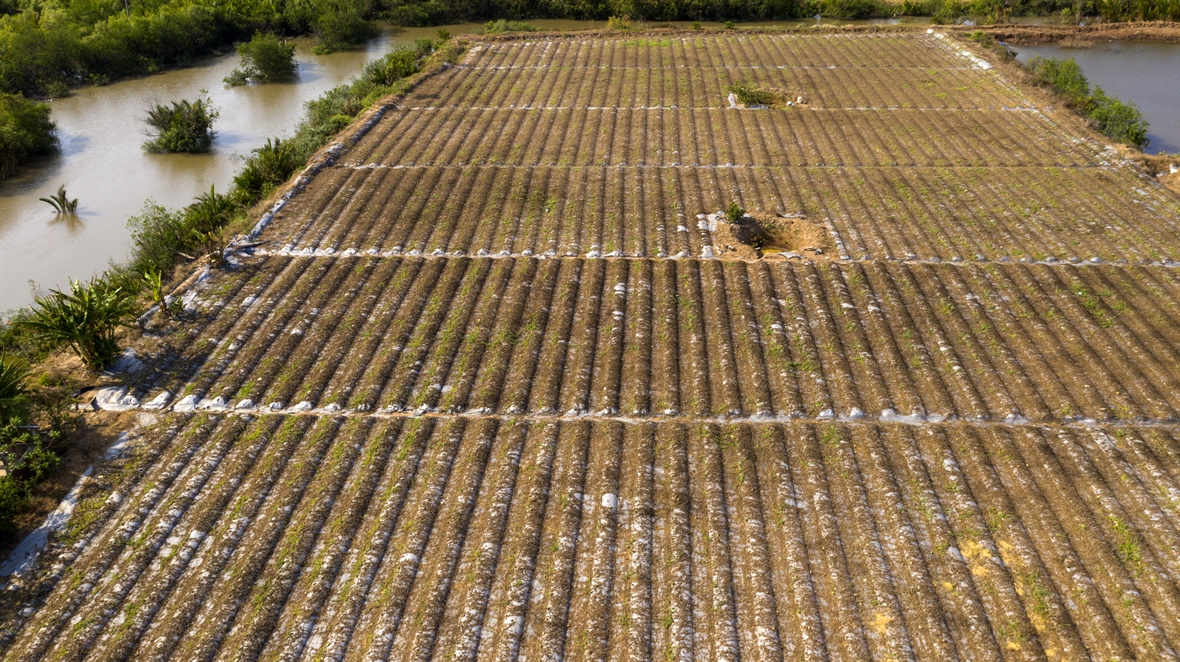
Damaged watermelon field . Photo: Thong Hai
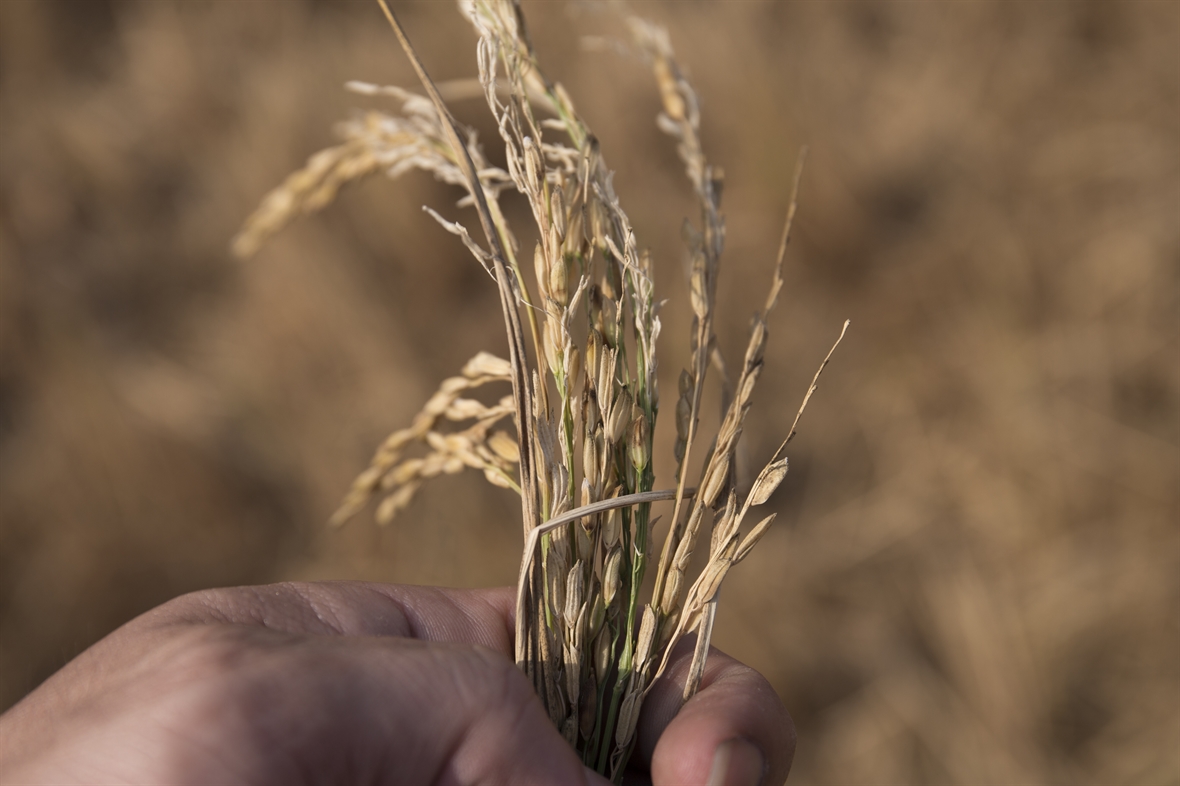
Affected rice in in My Nhon and Thuy An communes, Ba Tri district, Ben Tre. Photo: Thong Hai
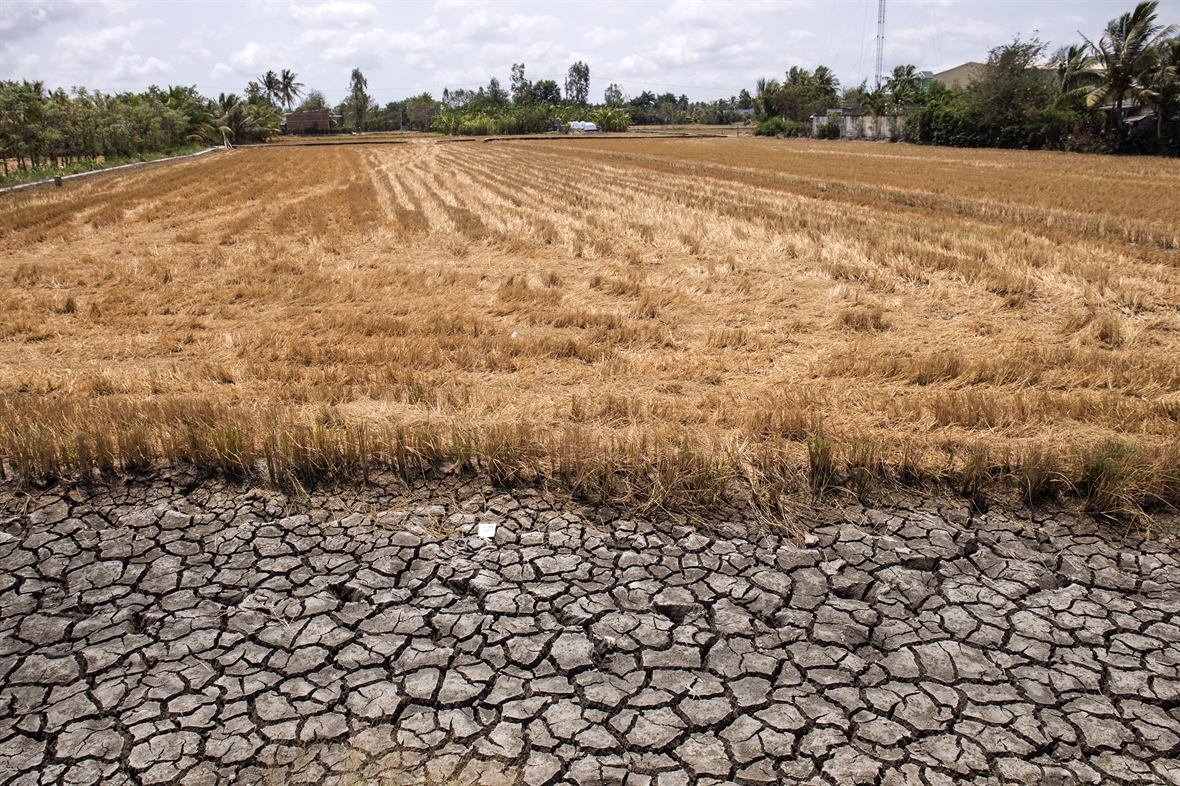
Drought and saltwater intrusion have affected about 40,000ha of rice in the Mekong Delta. Photo: Thong Hai |
Not only causing damage to production, saltwater intrusion and drought also seriously affect people’s lives. Severe saltwater intrusion has caused serious water shortages in the Mekong Delta. Currently, some 96,000 households do not have sufficient fresh water for daily use. This situation has been going on for many years and each year it gets more severe than the previous one.
As reported by the agricultural sector, saltwater intrusion in the Mekong Delta is at a severe level and will continue to remain high for the rest of the dry season. Salinity at the Mekong river’s mouth is expected to remain high until the end of March, while the same situation will be seen in Vam Co, Cai Lon and Ca Mau rivers until the end of April 2020.
Proactive for long-term adaptation
In the past, implementation of Government Resolution 120/NQ-CP on climate resilient and sustainable development of the Mekong Delta region, caused the whole region to strengthen more than 580km of embankments and 207 dams. Localities have also taken initiatives in flooding to get water into the rice fields to get alluvium and clean the fields, in an area of over 141,351ha. In 2020, the Ministry of Agriculture and Rural Development will continue allocating 5,157 billion dong to implement 20 projects on salinity prevention in the Mekong Delta.
In anticipation of this year’s drought, from mid-2019, Prime Minister Nguyen Xuan Phuc requested the implementation of urgent solutions to prevent drought and salinity. Thanks to the work of forecasting and early warning, the level of drought and saltwater intrusion has reached a record level but the level of damage has been significantly reduced. Over 90% of the winter-spring rice area in the Mekong Delta has successfully avoided drought and saltwater intrusion due to early transplant instructions.
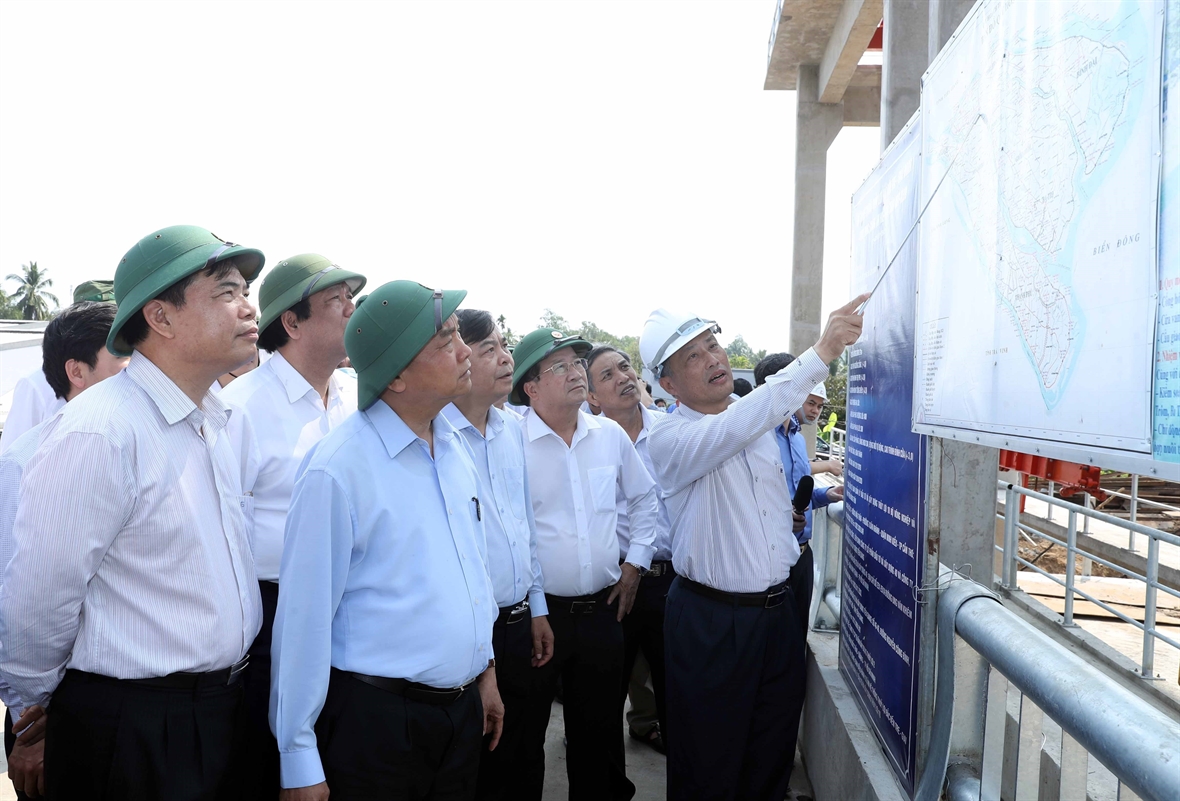
Prime Minister Nguyen Xuan Phuc inspects the effects of drought and saltwater intrusion
in Chau Thanh district, Ben Tre province. Photo: Thong Nhat/VNA
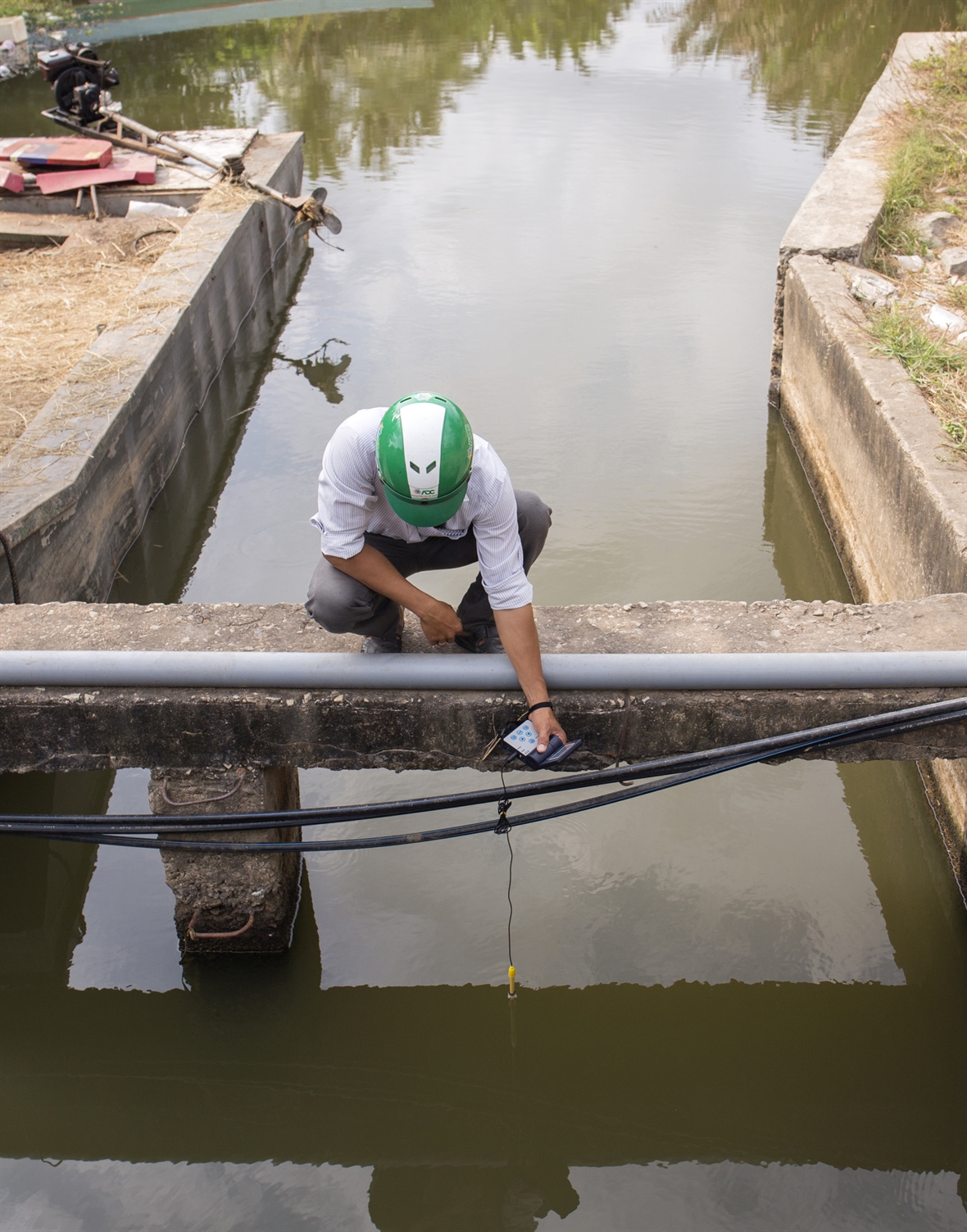 Measuring the level of salinity on a canal in Binh Tay commune, Ba Tri district, Ben Tre. Photo: Thong Hai
Measuring the level of salinity on a canal in Binh Tay commune, Ba Tri district, Ben Tre. Photo: Thong Hai
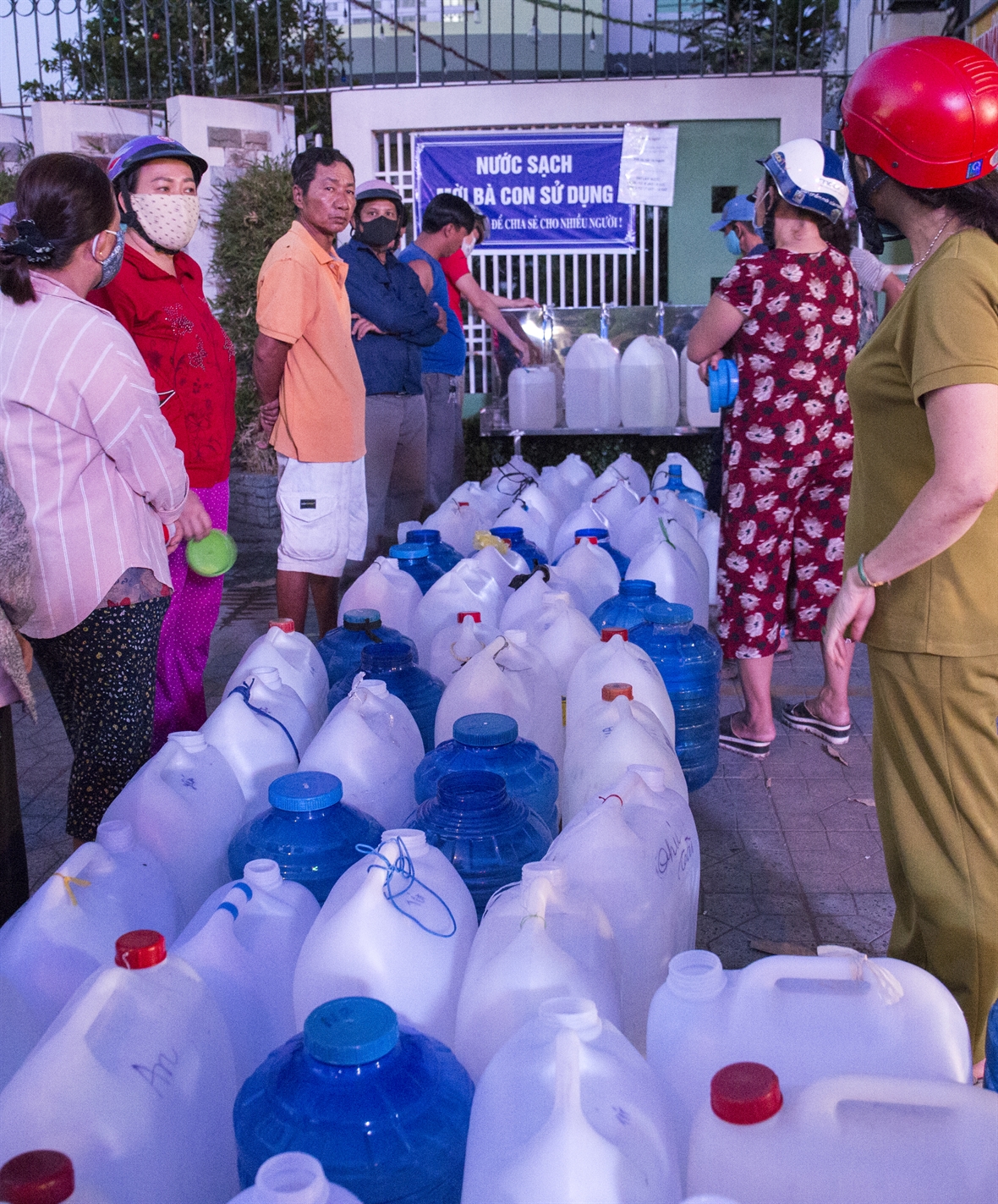 Locals line up to take water in Ben Tre city. Photo: Thong Hai
Locals line up to take water in Ben Tre city. Photo: Thong Hai
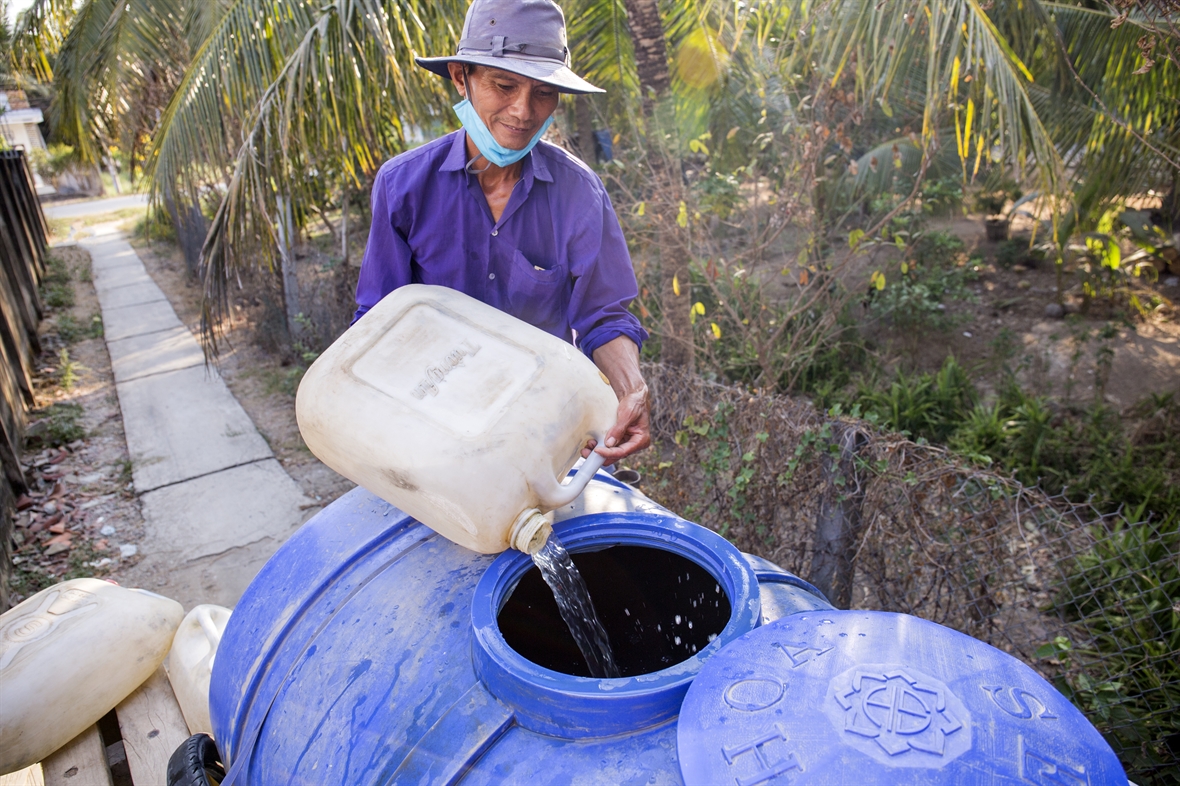 Locals in Ba Tri district buy water at 120,000 dong/m3. Photo: Thong Hai
Locals in Ba Tri district buy water at 120,000 dong/m3. Photo: Thong Hai
 A construction worth nearly 10 billion dong to prevent saltwater intrusion in Ba Tri district, Ben Tre. Photo: Thong Hai
A construction worth nearly 10 billion dong to prevent saltwater intrusion in Ba Tri district, Ben Tre. Photo: Thong Hai
|
The most worrying issue up to now is to ensure clean water for living in some areas. Currently, many localities in the Mekong Delta are urgently making every effort to bring fresh water back to the people. During his fact-finding tour to the Mekong Delta, Prime Minister Nguyen Xuan Phuc also requested localities to focus on addressing the shortage of water. The Prime Minister has approved a plan to provide 70 billion
dong each to the five Mekong Delta provinces which have declared a state of emergency to cope with the situation.
“Agricultural production in the Mekong Delta is applying “3 shifts”: shifting seasonal calendars to avoid drought and salinity; using varieties suitable to drought, salty conditions and bravely converting to plants and livestock which are more economical than rice.”
Dr. Tran Huu Hiep, economist of the Mekong Delta.
|
In the long term, the Ministry of Natural Resources and Environment said it would accelerate the development of national water resource planning, the integrated planning of inter-provincial river basins and inter-provincial water sources. This will be done in order to balance, regulate and appropriately allocate water resources in space and time. They will also specify water allocation plans in case of drought and shortage of water for all purposes.